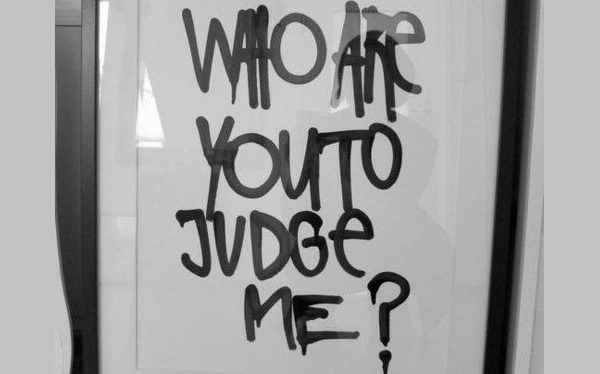Review of Shadow of the Tomb Raider
 The relaunch of Tomb Raider heralded the arrival of a new Lara Croft - inexperienced, vulnerable, yet fearful of tombs and murder. By the end of the game, Lara was transformed, and in Rise of the Tomb Raider, she bravely and alone went out against an international militarist organization. It would seem that her formation by this time had actually ended - but no, the developers said that a whole trilogy would be devoted to Lara's transformation into the legendary Tomb Raider. Rise was already an aimless, pointless game, and Shadow is an exact copy of Rise.
The relaunch of Tomb Raider heralded the arrival of a new Lara Croft - inexperienced, vulnerable, yet fearful of tombs and murder. By the end of the game, Lara was transformed, and in Rise of the Tomb Raider, she bravely and alone went out against an international militarist organization. It would seem that her formation by this time had actually ended - but no, the developers said that a whole trilogy would be devoted to Lara's transformation into the legendary Tomb Raider. Rise was already an aimless, pointless game, and Shadow is an exact copy of Rise.
Many blamed Rihanna Pratchett for the scenario troubles of the reboot and Rise, but changing the scriptwriter to Jill Murray (Assassinasss Creed III: Liberation, Assassinʼs Creed IV: Black Flag) did not help the case. Rather, on the contrary - she only emphasized that the updated Tomb Raider is a trilogy only because the publisher wanted to see it as a trilogy. Not because the developers had a story to tell. This is evidenced by the change of studio.
The updated Tomb Raider series is so faceless that it can be transferred from California to Quebec, and no one will notice the difference.
So, about the history. Reboot pretended she was important to him. For her sake, after all, he killed old Lara Croft - fearless, invincible, witty, wonderful. For the story of a new Lara - groaning, suffering, overpowering, growing from a victim into a hunter. But the last (and first) notes of the heroine's reflection remained on Yamatai Island: practically nothing remained from the reboot in the sequel. The main motivation for Lara from the reboot - Samantha - unceremoniously disappeared off-screen, rejecting all emotional ties with other characters (except for the utilitarian loyal friend Jonah). Miss Croft, with a rabid obsession, is eager to find out what her father was investigating before his death, and discovers that he was killed by the secret organization "Trinity", which has existed since Byzantine times and is looking for powerful artifacts throughout the Earth. The whole plot of Rise boils down to
This could well be regarded as a tie-in, as a groundwork for the future - only for this, the developers must have thought out a kind of holistic story the size of a trilogy. Shadow of the Tomb Raider confirms that there is no story and there never was. Just as Rise threw everything that was rebooted overboard, so Shadow merges what little Rise gave us. You will have to forgive me for the spoilers, but you can't tell me about it without them.
Rise, by hook or by crook, was winding up the hype around Trinity. The oldest organization with seemingly endless resources, containing a huge army of mercenaries and hunting for mysterious items that promise untold power - well, real Illuminati or Templar! And the very first thing that Shadow of the Tomb Raider does - says: "This kind bearded uncle - Pedro Dominguez, he is the leader of the Trinity." Which in itself reduces a cool secret organization to one person. But then the game throws out the absolutely impossible!
In the course of the plot, Lara, through her imprudence and curiosity, initiates the Mayan apocalypse and seeks to stop it. To do this, she travels to the village of Paititi, lost in the Peruvian mountains, living in complete isolation from the outside world. And there she learns that Dr. Dominguez (looking like some kind of conquistador, with a mustache and beard) is actually the main cultist of this abandoned village of Protomaya. And all he wants is to perform a ceremony during the apocalypse that will allow him to become a god, for which he needs the same two artifacts as Lara to prevent the end of the world.
Even if we leave behind the scenes the stupidest discrepancy between Dominguez's appearance and literally all the other inhabitants of Paititi (the Indians are generally beardless and beardless), this plot twist makes absolutely the whole Rise of the Tomb Raider meaningless. Why does the Trinity need a Divine Source, when the whole Trinity is Dominguez, and he only needs a dagger and a box? How did a huge organization that has existed since the millennium before last turn into the obedient henchmen of some pathetic cultist from a village stuck in the Middle Ages?
After destroying its prequel, Shadow of the Tomb Raider did not find any meaning of its own. Lara constantly repeats the same thing - "we must stop the Trinity." In obsession with her, Dominguez does not lag behind with his "it is necessary to protect Paititi" (becoming a god and remaking the world, of course). This is pretty much everything we hear from the two central characters throughout the game. If Lara, the victim from the reboot, could still cause some sympathy, then the crazy Lara from Rise and Shadow, climbing where she was not invited, and then moaning picturesquely - this is just some kind of misunderstanding.
Here is a very good description from Daniel Chaie-Bisson, Game Director of the entire trilogy:
She spends all her time with corpses, and everyone around her is trying to kill her ... But what if we just put her in a cafe so that she could talk about something other than archeology and saving the world? What will she say? We have no idea.
Yes, perhaps, the classic Lara Croft could also be blamed for the lack of depth or insufficient development of her as a character - but the new trilogy, designed to "humanize" her image, ends up being closed by the heroine so useless, one-sided and superficial that she even admits developers are unable to keep up the conversation about anything but "where to go next to find our next McGuffin." Classic Lara was bright, inspiring, she was a superheroine - and she was killed, deleted from the canon for the sake of this ugly dummy. I patiently waited for the Shadow of the Tomb Raider finale, leaving hope that we would see some kind of new Lara rise, something that would allow her to sympathize, something that would justify the existence of this trilogy. Not wait.
In his review of Rise of the Tomb RaiderVadim Milyushchenko wrote that, despite all the efforts of the writers, it still became an excellent adventure game - and I completely agree with him on that. But I will argue with the praise for the segments with "shoots" - linear, spectacular, scripted. In my opinion, these are precisely the weakest points of the entire new trilogy, obviously inspired by the success of the Uncharted series. The fact is that there are really no games in such segments - run in the right direction and press exactly the buttons that the developers have conceived, because a step to the left and a step to the right is guaranteed death. Reboot abused this a little more, but Rise and Shadow noticeably diluted the linear segments with spacious platforms, where you can improvise in the matter of battles with enemies, and there is something to do optional - for example, the search for secrets.
It was this openness that made Rise and Shadow cool adventure games (unlike Uncharted, which remained linear shooters). It's just that the best thing about them is outside the main story campaign.
As in Rise, the gameplay in Shadow consists of battles, puzzles (usually with the use of cables and levers) and exploration of locations with the collection of all sorts of items and performing optional tasks. Difficulty can be adjusted separately for each of the three aspects, but, in general, the game does not cause any particular problems even at high. The linear path, as a rule, is easy to find, even if it is not smeared with white paint, the puzzles outside the optional tombs are simple and do not require hints, and the enemies, compared to Rise, seem to have ceased to resist. The ability to disguise herself in mud and hide in the grass and near overgrown walls literally invites Lara to kill opponents with stealth with one button.
The screenshot below shows the situation from the end of the game. I killed two enemies with one grass attack, the other three are approaching me. Thanks to the fact that I leaned against the wall, I will kill two more with one attack, after which I call the last remaining one with a "triangle" - in close combat the commandos do not even think to resist. Everything, the segment is passed.
There was a lot of action in Rise, but at least in places it was difficult. In Shadow, there are not so many enemies, and the most difficult places are optional puzzles in the tombs. From part to part they became more and more confused and then reached their climax. Surely it will please someone.
No matter how much I talk about Shadow, I always have to add Rise. The new part practically did not change anything, did not correct the old formula. The game still sticks in the wheels when trying to clear out locations completely before moving on to the next, erecting barriers in the spirit of metroidvania. Found a treasure chest on the map and ran across the entire location again to open it? Prepare to be disappointed: for some reason, lockpicks for chests are sold not in a modern Spanish-speaking town, but in a medieval village. A hidden merchant from a completely walk-through sidequest. We'll have to replay everything again!
Not even the obvious conveniences were added, such as the ability to turn on the flashlight on her own, which Lara always has with her. Situations are not uncommon when you can't see anything on the screen even with the brightness turned up, and Lara thinks that you don't need extra light - so get lost in the dark.
Invisible walls and ubiquitous scripts have not gone anywhere. In some places, Lara, doing incredible tricks, refuses to crawl through the window, where even an unprepared person would walk on foot. The huge tombs are devoid of a map, which makes it very difficult to navigate in them - on high difficulty the "eagle vision" is disabled, and there are no clues at all. Dialogue replicas cannot be skipped - you have to wait painfully long for the NPCs to agree.
But worst of all, the storyline of Shadow completely repeats the structure of the prequel.
I've already apologized for the spoilers, but in fact, the main spoiler for Shadow is Rise itself. Judge for yourself: first, Lara looks at the introductory location for an hour, where she meets the last boss, and then goes to the main scene of the game, parting with Jonah along the way and remaining in the wild forest face to face with ferocious animals. Then Lara finds herself in a closed settlement, living in isolation from civilization, and immediately rescues the leader of this settlement. She helps the residents in the fight against Trinity, and in the finale, elite mercenary units storm a high tower in a secret city, and both residents and magical creatures-guardians of the tower fight with them. Shadow copies this formula one to one. There's even a helicopter boss.
You can blame me for clinging to little things, but it seems to me that the unwillingness of developers to fix these long-known flaws says a lot. Shadow of the Tomb Raider is a casual AAA game whose creators seemed to be trying to tick off the list of what was in the prequel, and did not try to do more than just “another game about this new Lara Croft with D : on the face ".
The main innovation of the game - the large and lively village of Paititi - never grows into a significant advantage: the local residents are boring, and their stories are unbearably banal. However, could you expect more from the medieval Indians?
From a mechanic standpoint, Shadow of the Tomb Raider is still that great game from 2015. But since then, three years have passed, and nothing fundamentally new has appeared in it. Including the most important thing - meaning. I enjoy the gameplay of Rise and Shadow even more than the same Uncharted, but I expect more from Tomb Raider than just the gameplay.
Tomb Raider is a legendary franchise, like its heroine, and new parts with their disgustingly faceless Lara kill the very essence of the series. Thanks for this experiment, but now Tomb Raider needs another reboot.





